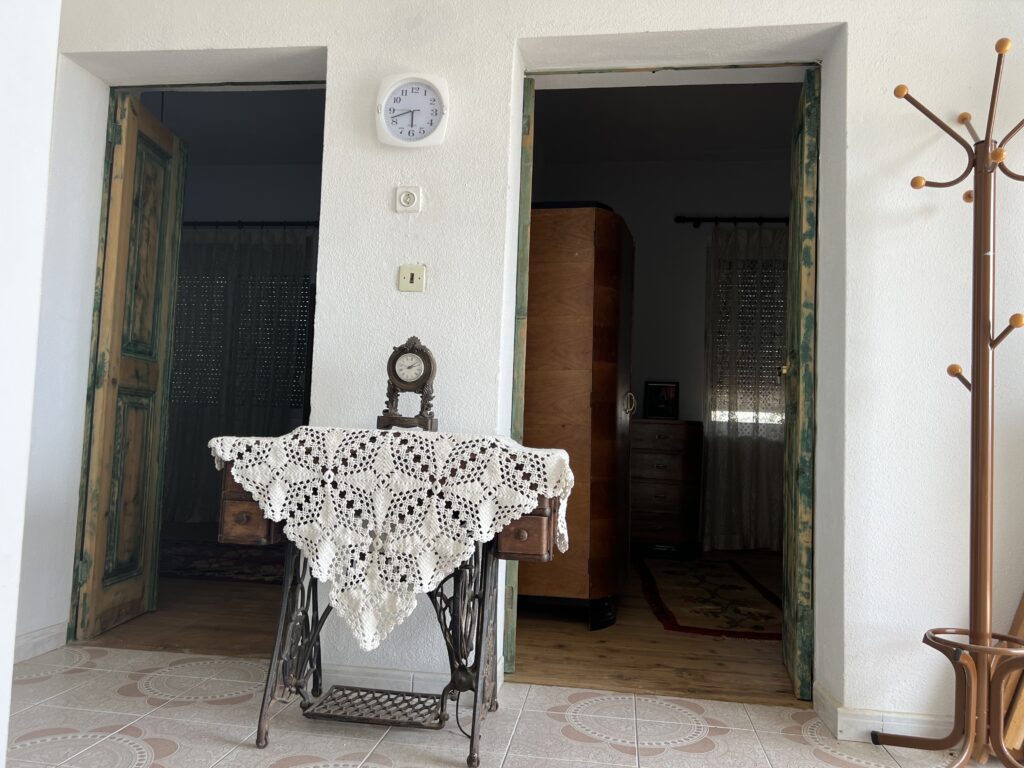Tantella is a captivating aspect of Albanian textile heritage, known for its intricate weaving and vibrant designs but the one I've shown in the picture above is the most basic kind all white and beautiful. I'd like to explore the significance, craftsmanship, and cultural relevance of tantella. My mom used to make many of these in small and large sizes, but when I found this picture on ExpatsinAlbania, I had to write an article about it here. So thank you to Denisa for posting it.
Introduction to Tantella
Tantella is a traditional Albanian woven textile, small piece, that serves as a decorative table piece, often used to adorn homes and celebrate cultural heritage. Made from high-quality materials such as cotton or acrylic, tantella is entirely handmade, showcasing the artistry and skill of Albanian weavers. The weaving process involves colorful strings meticulously interlaced to create stunning patterns, reflecting both natural motifs and geometric shapes.
Cultural Significance
The tradition of weaving in Albania has deep roots, influenced by centuries of Ottoman rule. This craft has been passed down through generations, with artisans like Nebija Qotaj, who began weaving at the age of 10, playing a crucial role in keeping this art form alive. Tantella and similar textiles are often gifted during special occasions, symbolizing hospitality and the rich cultural identity of the Albanian people.
Craftsmanship and Design
Tantella pieces are characterized by their vibrant colors and elaborate designs but can also be just white (see picture above). The patterns often draw inspiration from nature and traditional motifs unique to Albania. The weaving process can take weeks and requires multiple skilled hands to complete. Artisans use locally sourced materials dyed with natural colors extracted from plants like pomegranates and walnuts, ensuring that each piece is not only beautiful but also environmentally friendly.
Preservation of Tradition
Despite modern challenges, the tradition of creating tantella continues to thrive. Many artisans operate small workshops where they produce these textiles while also teaching younger generations the skills needed to maintain this craft. However, there is concern that as younger people migrate to urban areas for better opportunities, this rich tradition may face decline.
Where to Find Tantella
Visitors interested in purchasing tantella can find these beautiful textiles in local markets or specialized shops throughout Albania. Many artisans sell their work online, allowing a broader audience to appreciate and support this unique craft. By purchasing tantella, buyers not only acquire a beautiful piece of art but also contribute to the preservation of Albanian culture 4.
Conclusion
Tantella is more than just a decorative item; it represents the heart of Albanian craftsmanship and cultural identity. As you explore this traditional textile, consider its significance in preserving the rich history of Albania’s weaving traditions. By sharing this knowledge on AlbanianBlogger.com, you can help promote appreciation for tantella and support the artisans who keep this beautiful craft alive.This article aims to inform readers about tantella's beauty and significance while encouraging them to explore Albania's rich textile heritage further.
This article aims to inform readers about tantella's beauty and significance while encouraging them to explore Albania's rich textile heritage further.
Some more sources:
https://undiscoveredbalkans.com/albanian-rug-traditions-nebija-qotaj/
https://oaxacaculture.com/2019/09/yes-textiles-in-tirana-albania/
https://www.instat.gov.al/media/2601/ecuria_e_tregtise_se_jashtme_2013.pdf
https://www.myguide-albania.com/shopping/gjino-mjeda-textile
https://www.instat.gov.al/media/1745/foreign-trade-2009-2013.pdf

